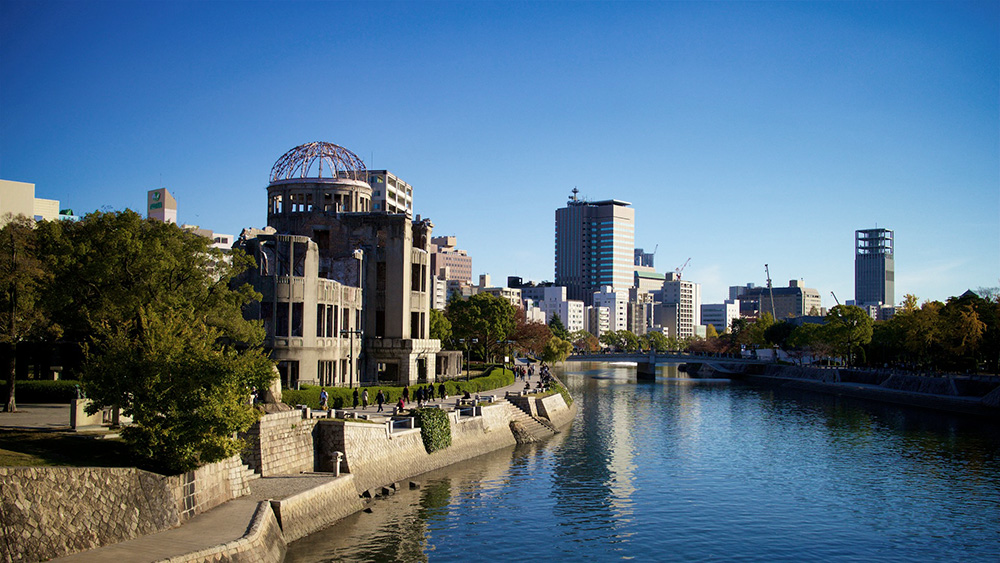
Himeji Castle in Hyōgo Prefecture, south-west Japan
I did not think melon soda was going to be the hit of the trip.
For some of the students, it was the first time leaving New Zealand, or even going on a plane – that alone could have been a highlight. However, it was the lime-green coloured Fanta that they found in convenience stores and vending machines that inextricably won their hearts.
Having formerly lived in Japan for around eight years and having travelled there on countless occasions for both work and pleasure, I was excited to see Japan through the eyes of my students for the first time.
What would they like? What would they not like? Is the schedule too busy? Will anyone get lost? These were some of the questions that filled my head as we departed.
The students coped well with the hustle and bustle of Tokyo and quickly became experts at navigating trains and buying tickets. We even had the chance to ride a packed subway train during rush hour on a Monday morning.
The students were in disbelief when a crowded train pulled in, asking nervously, “Is that our train?” Hoping to help the students mentally prepare, I replied, “No, but ours will likely be just as crowded.” We were squished, but we survived!
It was exciting for me to see what the students enjoyed and didn’t enjoy.
It probably goes without saying that riding crowded trains wasn’t a popular activity. Naturally, they enjoyed Disneyland, despite the weather not being on our side that day. Aside from that, there were two things that the students seemed to really enjoy that stood out to me.
The first was the school visits. During our trip, we had the opportunity to visit four schools and one university.
At each school, the students were made to feel welcome, and they definitely enjoyed interacting with people their own age.
They got to have a go at onigiri (rice balls), making green tea, playing traditional Japanese games and experiencing a little bit of what it’s like to be a high school student in Japan.
Some students even managed to learn some Kansai Japanese [a dialect from the Kansai region} such as ‘nande ya nen?', which roughly translates to 'Why on earth is that?'
Another highlight was meeting face to face with students we have been doing online classes with over the past couple of years.

Awatapu students mixing matcha to make tea
The second thing that stood out as a highlight for the students was our day trip to Nara.
They were initially captivated by the deer roaming around the park, and then rather apprehensive as the deer figured out the students had food and approached them looking for a treat. That was certainly a unique experience.
We then made our way to Tōdaiji [a Buddhist temple complex] where the students were blown away by the size of the building, and by the giant buddha.
Some students stood for a long time just staring at the giant buddha. Several took up the challenge to climb through the ‘Buddha’s Nostril – a hole in one of the temples pillars that legend says climbing through will bring prosperity and enlightenment.
I think the sedate nature of Nara was a nice contrast for the students compared to the busyness of Tokyo, Fukuoka and Osaka.
A highlight for me was our time at the Peace Park and museum in Hiroshima.
Early in term four, we embarked on the mission of making 1000 cranes to take with us to Japan.
I was impressed by the enthusiasm of students at school to make cranes, even some who weren’t going on the trip.

Visiting the Peace Memorial (Genbaku Dome) in Hiroshima was a sobering moment for the students
As we walked around the Peace Park, the atmosphere among the group was very sombre.
After briefly looking at the statue of Sadako Sasaki (a Japanese girl who was a victim of the bombing of Hiroshima), we headed over to look at the A-Bomb Dome and then looped around the park back to the statue.
When we arrived back at the statue, we found a group of junior high school students standing respectfully in front of the statue.
We had the privilege of watching their ceremony as they sang songs, made encouraging speeches, and conducted a moment of silence. Seeing this was a moving experience for all of us.
After donating our cranes, we headed to the museum.
Despite having visited the museum a few times myself, there was something that I noticed this time that I hadn’t before: many of the children whose stories are displayed were working in factories when the bomb was dropped.
This really brought home the harsh realities of war. It also gave the students an appreciation of the peaceful country we are so fortunate to live in.

Children's Peace Monument in Hiroshima
There really is so much more I could share, but I will keep it to this.
The students all enjoyed themselves, learnt a lot, and perhaps most importantly, they all want to return to Japan again to explore even more. Some students said they would like to return one day to teach English in Japan. I consider that a success.
As for the success of melon soda, that will remain a teenage mystery.
The Foundation's education programme provides New Zealand educators with the knowledge, resources and experiences to equip their students to thrive in Asia.
Japan study grants assist secondary school classes (Years 9 to 13) to travel to Japan for study tours.


